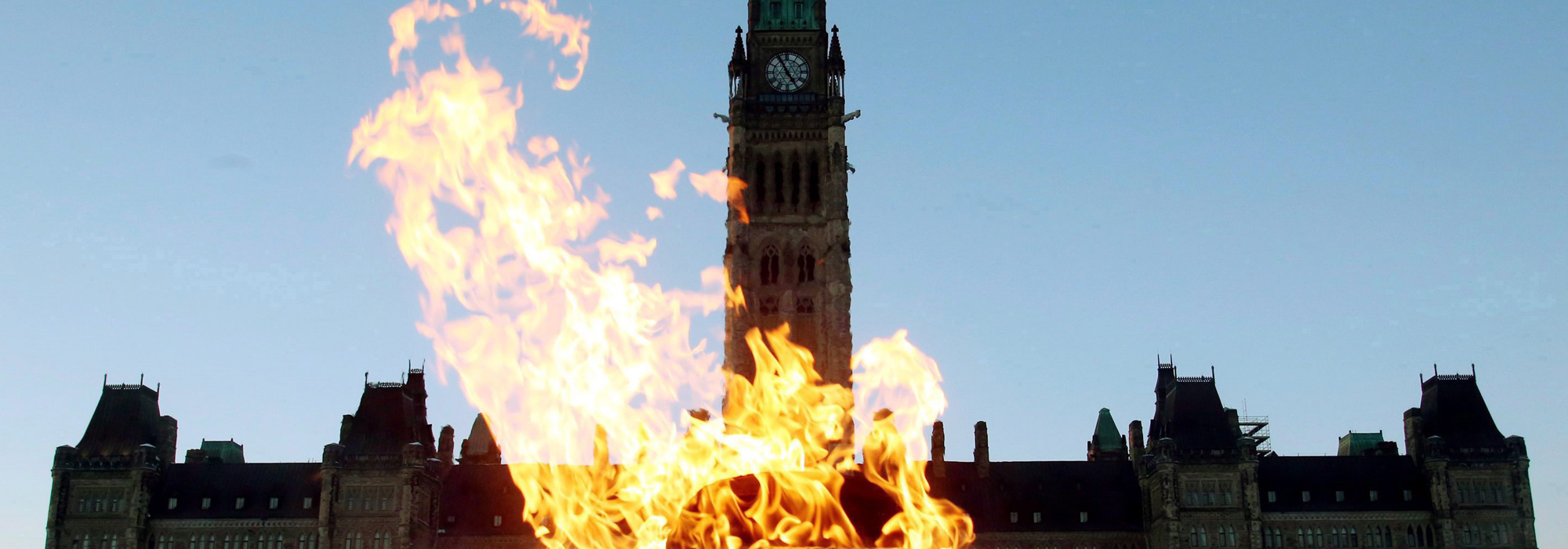
When Lester B. Pearson lit the Centennial Flame in front of Parliament Hill on December 31, 1966, Canada was on the cusp of major change in many areas. At that time, the country was still fundamentally white (only 3.2 percent of the population did not report European heritage in the 1961 census), but it would begin to see substantial increases in immigration. Women were starting to have a sustained foothold in the workplace, including as members of Parliament. And a national unity crisis was on the horizon.
“Tonight we let the world know that this is Canada’s year in history,” Pearson told the crowd of 2,000 in 1966, as reported by the Globe and Mail.
He continued: “Let the record of that chapter be one of co-operation and not conflict; of dedication and not division; of service, not self; of what we can give, not what we can get.”
The changes were big, and so were the public policy moves in 1966-67.
This was the period that gave us the Canada Pension Plan, the Canada Assistance Plan, the Guaranteed Income Supplement, and the Medical Care Act.
And there were other watershed moments that we might have forgotten. For example, it was shortly before the Christmas recess of 1966 that members of the Standing Committee on Health and Welfare recommended that contraception should no longer be prohibited under the Criminal Code. Yellowknife officially became the capital of the Northwest Territories, instead of Ottawa.
As Canada celebrates its sesquicentennial, it’s interesting to imagine what our policy-makers, researchers and legislators will see as being critical to the lives of citizens in 2067. We could also reflect on missed opportunities that could negatively affect our well-being 50 years from now — consider the many opportunities lost since 1967 to transform Canada’s relationship with Indigenous peoples. Policy Options will carry reflections on some of these issues over the course of 2017, in a series of articles about long-term public policy thinking.
Canadian writer and artist Douglas Coupland encapsulates what we’re all feeling when he says, “Somewhere in the past few years the present melted into the future.” Technological change is happening so quickly that it might seem futile to try to cast our minds half a century ahead.
But the recent political earthquakes in the United Kingdom and the United States should be a reminder that we need to take constant seismic readings on where society is headed, and how we can prepare for it. As France St-Hilaire, David Green and Craig Riddell recently wrote, Canada is not immune to the income inequalities that have given rise to populist movements elsewhere.
Our politicians will naturally focus on four-year electoral cycles and the limited timeframe of budget forecasts. But we must push them to think further into the future.
Some of that is already happening, with the vigorous debate Canadians are having on how to address and adapt to climate change. Of course, this is an unavoidable discussion, with the impact of global warming already being felt in the North and by our farmers.
It seems as if every week somewhere in Canada there is a conference about innovation, skills and/or productivity, and how Canada can remain globally competitive as economies change and become focused more on services and intellectual property than on commodities.
There are voices pushing for greater immigration as a way to fuel prosperity in the future.
In Ottawa, my kids and grandkids will be riding the new light-rail transit system that is being built today — part of a modernization of transit happening across the country.
An examination is unfolding as to how we will uphold a sense of Canadian identity in the future, given the fragmentation of the media and the weakening of our cultural institutions.
But there are some policy discussions that are still embryonic.
There seems to be little talk about the impact of automation and how to deal with workers it is displacing.
The modernization of our 20th-century style elementary and secondary educations systems has not gathered nationwide momentum, nor has the need to improve digital literacy and numeracy in the very young.
How we will cope, from a regulatory perspective, with artificial intelligence is a question I have yet to see a Commons committee tackle.
Major migration trends due to conflict and climate change (the two are often inextricably linked) will affect us, and we should be preparing for it.
All of these challenges require an intelligent, inclusive, multidisciplinary discussion that is rooted in evidence and inquiry. Implementing solutions and strategies will require bold leadership. Let’s just hope these big debates on the way to 2067 aren’t summarily dismissed as “elitist,” and needlessly stalled.
This article is part of the Public Policy toward 2067 special feature.
Photo: Fred Chartrand/The Canadian Press
Do you have something to say about the article you just read? Be part of the Policy Options discussion, and send in your own submission. Here is a link on how to do it. | Souhaitez-vous réagir à cet article ? Joignez-vous aux débats d’Options politiques et soumettez-nous votre texte en suivant ces directives.








